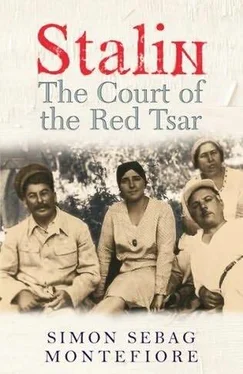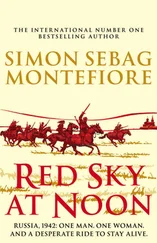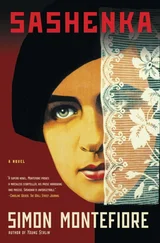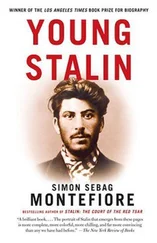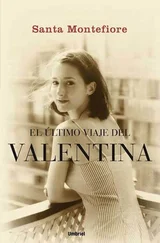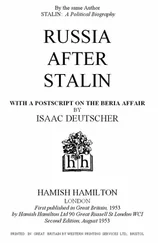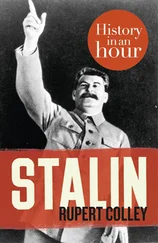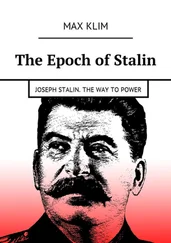Worse, the women pursued vendettas against each other: The photograph of the 1934 birthday party now caused another row that undermined Stalin’s trust. When Sashiko Svanidze stayed with him at Kuntsevo, she found the photograph on Stalin’s desk and borrowed it in order to print up some copies, the sort of pushy behaviour often found in ambitious women at imperial courts, suggesting that these ladies regularly read the papers on Stalin’s desk. Maria, who loathed Sashiko’s brazen climbing, discovered this, warning Stalin: “You can’t let her make a shop out of your house and start trading on your kind-heartedness.” It was a rare occasion indeed when Stalin was criticized for his big-heartedness.
He became irritated, blaming his secretaries and Vlasik for losing the photographs. Eventually he said Sashiko could “go to Hell” but his fury applied equally to all the family: “I know she did wonderful things for me and other Old Bolsheviks… but nonetheless, she always takes offence, writes letters to me at the drop of a hat, and demands my attention. I have no time to look after myself and I couldn’t even look after my own wife…” Nadya was constantly on his mind at this time.
Sashiko was dropped, to Zhenya and Maria’s delight, yet they themselves took liberties. The Svanidzes still acted as if Joseph was their kind-hearted paterfamilias, not the Great Stalin. When Stalin invited the Svanidzes and Alliluyevs to join him for dinner after watching the Kirov Ballet, “we badly miscalculated the time and did not arrive until almost midnight when the ballet ended at ten. Joseph does not like to wait.” This understates the case: it is hard to imagine anyone forgetting the time and leaving an American president waiting for two hours. Here we see Stalin through the eyes of his friends before the Terror turned him into a latter-day Ivan the Terrible: we find him “stood up” by his dinner dates for two hours, left at Kuntsevo to play billiards with the bodyguards! Stalin, his sense of historic and sacerdotal mission despoiled, must have reflected on the disrespect of these Soviet aristocrats: they were not remotely afraid of him.
When they arrived, the men went off to play billiards with the disgruntled Stalin who was distinctly unfriendly to the women. But after the wine, he shone with pride about Svetlana, recounting her charming sayings like any father. Nonetheless they would pay for their tardiness. 2
* * *
Stalin had loved his unscheduled Metro ride, telling Maria how moved he was “by the love of the people for their leader. Here nothing was prepared and fixed. As he said…the people need a Tsar, whom they can worship and for whom they can live and work.” 3He had always believed the “Russian people are Tsarist.” At various times, he compared himself to Peter the Great, Alexander I and Nicholas I but this child of Georgia, a Persian satrapy for centuries, also identified with the Shahs. He named two monarchs as his “teachers” in his own notes: one was Nadir Shah, the eighteenth-century Persian empire builder of whom he wrote: “Nadir Khan. Teacher.” (He was also interested in another Shah, Abbas, who beheaded a father’s two sons and sent him their heads: “Am I like the Shah?” he asked Beria.)
But he regarded Ivan the Terrible as his true alter ego, his “teacher,” [85] In his entourage, Stalin even called Bukharin “Shuisky,” according to Kaganovich, referring either to the Shuisky family of boyars who lorded it over the young Ivan, or the so-called “ Boyars’ Tsar” after Ivan’s death. Either way, Stalin was identifying his own position with that of Ivan against his boyars .
something he revealed constantly to comrades such as Molotov, Zhdanov and Mikoyan, applauding the Tsar’s necessary murder of over-mighty boyars . Ivan too had lost his beloved wife, murdered by his boyars . This raises the question of how his grandees could have claimed to be “tricked” by Stalin’s real nature when he openly lauded a Tsar who systematically murdered his nobility. 4
Now, in late 1935, he also began to reproduce some of the trappings of Tsardom: in September, he restored the title Marshal of the Soviet Union (though not Field Marshal), promoting Voroshilov, Budyonny and three other heroes of the Civil War: Tukhachevsky whom he hated; Alexander Yegorov, the new Chief of Staff, whose wife had so upset Nadya on the night of her suicide; and the legendary Vasily Blyukher. For the NKVD, he created a rank equivalent to Marshal, promoting Yagoda to Commissar-General of State Security. Sartorial splendour suddenly mattered again: Voroshilov and Yagoda gloried in their uniforms. When Stalin sent Bukharin on a trip to Paris, he told him, “Your suit is threadbare. You can’t travel like that… Things are different with us now; you have to be well dressed.” Such was Stalin’s eye for detail that the tailor from the Commissariat of Foreign Affairs called that afternoon.
More than that, the NKVD had access to the latest luxuries, money and houses. “Permit me 60,000 gold roubles to buy cars for our NKVD workers,” wrote Yagoda in a pink pen to Molotov on 15 June 1935. Interestingly Stalin (in blue) and Molotov (in red) signed it but reduced it to 40,000. But that was still a lot of Cadillacs. Stalin had already ordered that the Rolls-Royces in the Kremlin be concentrated in the “special garage.” 5
Stalin had become a Tsar: children now chanted, “Thank you, Comrade Stalin, for our happy childhood,” perhaps because he now restored Christmas trees. But unlike the bejewelled Romanovs, identified so closely with the old Russian village and peasantry, Stalin created his own special kind of Tsar, modest, austere, mysterious and urban. There was no contradiction with his Marxism. 6
Sometimes Stalin’s loving care for his people was slightly absurd. In November 1935, for example, Mikoyan announced to the Stakhanovites in the Kremlin that Stalin was taking great interest in soap. He had demanded samples, “after which we received a special Central Committee decree on the assortment and composition of soap,” he declared to cheers. Then Stalin moved from soap to lavatories. Khrushchev ran Moscow with Mayor Nikolai Bulganin, another rising star, a handsome but ruthless blond ex-Chekist with a goatee beard: Stalin nicknamed them the “city fathers.” Now he summoned Khrushchev: “Talk it over with Bulganin and do something… People hunt around desperately and can’t find anywhere to relieve themselves…” 7But he liked to play the Little Father intervening from on high for his people. In April, a teacher in Kazakhstan named Karenkov appealed to Stalin about losing his job.
“I order you to stop the persecution of teacher Karenkov at once,” he ordered [86] When he received no reply, again showing the attitude of the local bosses to the centre, Poskrebyshev chased up the Kazakh First Secretary: “We have not received confirmation of our order.” This time, the local boss replied instantly. But this only illustrates how the regional viceroys ignored Moscow in small matters and great, following the old Russian tradition of apparent obedience while avoiding actual execution of orders.
the Kazakh bosses. 8It is hard to imagine either Hitler or even President Roosevelt investigating urinals, soap or that smalltown teacher.
The dim but congenial Voroshilov initiated another step deeper into the mire of Soviet depravity when he read an article about teenage hooliganism. He wrote a note to the Politburo saying that Khrushchev, Bulganin and Yagoda “agree there is no alternative but to imprison the little vagabonds… I don’t understand why one doesn’t shoot the scum.” Stalin and Molotov jumped at the chance to add another terrible weapon to their arsenal for use against political opponents, decreeing that children of twelve could now be executed. 9
Читать дальше
